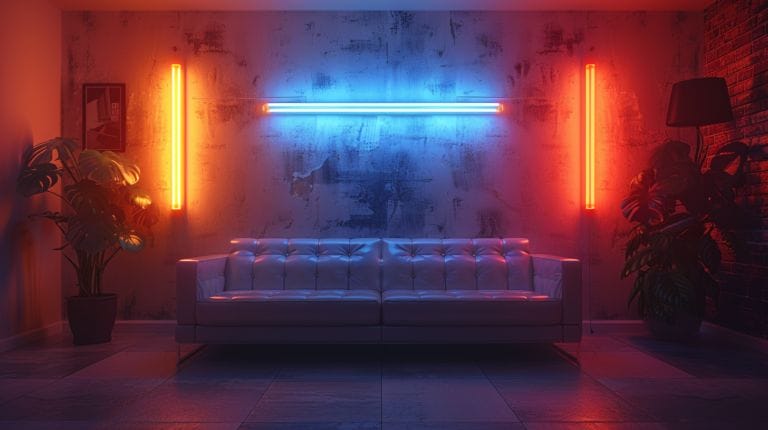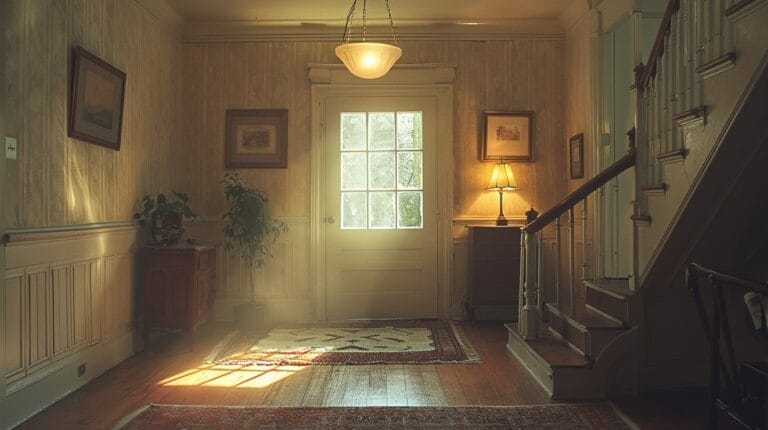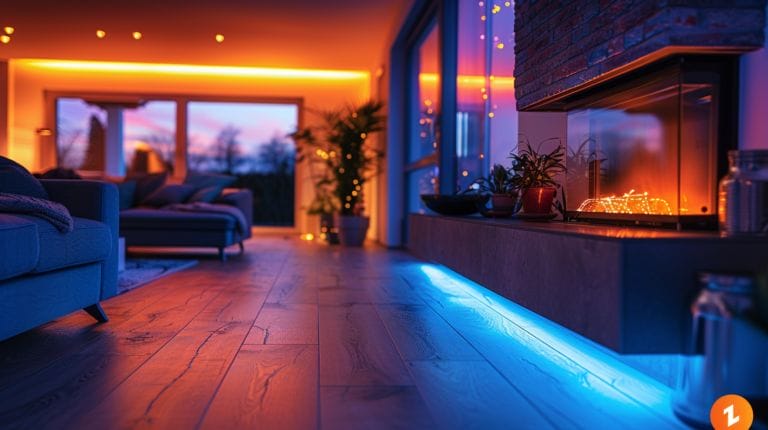How to Test a Light Fixture Before Installing: DIY Safety
When we’re preparing to install a new light fixture, it’s crucial to test it first to confirm both safety and functionality. We’ll need to inspect for any visible damage and gather our tools, including a multimeter and wire nuts. By connecting the fixture to a power source and measuring voltage, we can verify everything’s in order. But what happens if we encounter issues during testing?
Understanding these steps can protect us from potential electrical hazards and future headaches. Let’s explore the detailed process and tackle common troubleshooting scenarios together.
Key Takeaways
- Use a multimeter to check for continuity and voltage in the light fixture.
- Inspect the fixture and wires for visible damage or loose connections before testing.
- Utilize a non-contact voltage tester to ensure there are no live wires present.
- Follow the manufacturer’s wiring diagram accurately when connecting wires to the power source.
- Wear appropriate PPE, including insulated gloves and safety glasses, during the testing process.
Understanding the Importance of Testing a Light Fixture Before Installing

Before installing a light fixture, it’s crucial to verify it to avoid potential electrical hazards and unnecessary costs. By taking the time to test our new light fixture, we guarantee that it works correctly and safely. This proactive step can help us identify any faults that could lead to electrical failures or even fires. Testing acts as a safeguard, allowing us to catch issues early and avoid the complications of an improper install.
Electrical safety is paramount in any home improvement project. A faulty light fixture not only poses a risk to our property but also to our well-being. When we test a light fixture before installation, we can confidently proceed, knowing that we’ve minimized the risks. This step is an investment in our safety and peace of mind.
Furthermore, replacing or repairing a poorly installed fixture can be expensive. By verifying beforehand, we save ourselves from unnecessary expenses and the hassle of troubleshooting issues after installation. Let’s embrace this practice to achieve reliable and efficient electrical outcomes in our homes.
Gathering the Necessary Tools and Safety Equipment for Testing a Light Fixture

Let’s gather the essential tools and safety equipment we’ll need to test our light fixture properly. Ensuring we’ve the right gear is vital for both the effectiveness of our test and our personal safety.
Here’s what we’ll need:
- Multimeter: This indispensable tool will help us check for continuity and measure voltage, guaranteeing our light fixture is functioning correctly.
- Non-contact voltage tester: A quick and easy way to confirm no live wires are present before we start our test, enhancing our safety.
- Insulated screwdrivers: These will prevent accidental electric shocks while we’re handling the light fixture components.
- Personal Protective Equipment (PPE): Safety glasses and insulated gloves are a must to protect our eyes and hands from potential hazards.
It’s important to source these tools and safety equipment from reliable suppliers. High-quality tools not only ensure accurate testing but also provide peace of mind knowing we’ve prioritized safety.
Step-by-Step Instructions on How to Test a Light Fixture Before Installation

To guarantee our light fixture works correctly and safely, we’ll follow a systematic approach to testing before installation. First, let’s prepare the light fixture by ensuring it’s free from any visible damage. Check for loose wires or any signs of wear that could compromise safety.
Next, we conduct the test. Begin by connecting the light fixture’s wires to the power source using wire nuts. Set our multimeter to measure voltage, and carefully attach the probes to the corresponding wires of the fixture. This will help us verify that the current flows correctly through the fixture. Make sure to follow the manufacturer’s wiring diagram for precise connections.
Once connected, turn on the power source and observe the light fixture. If it illuminates steadily, our test indicates it’s likely safe for installation. However, if it flickers or doesn’t light up, we need to double-check our connections or consider the possibility of a faulty fixture.
Troubleshooting Common Issues Encountered When Testing a Light Fixture

When testing a light fixture, we might encounter common issues that require troubleshooting to guarantee proper functionality and safety. It’s crucial to recognize the signs of a defective fixture and address them promptly to avoid any future complications.
Here are some steps to take when facing inconclusive test results or detecting a defective light fixture:
- Check the Wiring: Confirm all connections are secure and wires aren’t frayed or damaged. Loose or damaged wiring can cause the fixture to malfunction or not work at all.
- Inspect the Bulb: Swap it with a known working bulb to rule out a defective bulb as the problem.
- Test the Power Source: Verify that the outlet or circuit you’re using for testing is functioning correctly.
- Look for Physical Damage: Examine the fixture for any visible signs of damage, such as cracks or exposed components.
Maintaining Safety and Efficiency After Installing a Light Fixture

Maintaining the safety and efficiency of your light fixture after installation involves regular upkeep and staying informed about electrical safety standards.
First, let’s schedule routine checks to make sure everything’s functioning properly. Dusting the fixture and checking for loose connections can prevent future issues.
When bulbs burn out, replace them promptly with energy-efficient options to maintain peak efficiency. Remember, flickering lights or unusual sounds aren’t normal; these are signs that something might be wrong. If we encounter persistent issues, it’s best to call an electrician to inspect and resolve them safely.
Staying updated with electrical safety news and standards is key. New advancements in lighting technology might offer safer and more efficient options. After installation, let’s also ensure that the light fixture’s wattage is appropriate for the room’s needs. Overloading the fixture with higher wattage bulbs can compromise safety and efficiency.
Conclusion
To sum up, by testing our light fixture before installation, we guarantee safety and functionality.
We gather the necessary tools, follow the step-by-step instructions, and troubleshoot common issues to prevent electrical hazards.
By taking these proactive steps, we can confidently install our light fixtures, knowing they’ll work correctly and efficiently.
Let’s prioritize safety and make our DIY projects successful and hazard-free.
Frequently Asked Questions
How can I replace a faulty light fixture without hiring a professional?
To replace a faulty light fixture on your own, make sure to turn off the power at the breaker, remove the old light fixture, take a photo of the wiring configuration for reference, consult online DIY resources or articles for step-by-step guidance, and install the new fixture following the correct procedure.
What should I do if I don’t feel confident in testing a light fixture myself?
If you don’t feel comfortable or confident in testing a light fixture on your own, it is advisable to consult with a licensed electrician or seek professional advice to ensure safety and correct installation.
Is it safe to touch a light fixture when testing for faults?
It is not safe to touch a light fixture when testing for faults, especially if the power is still on. Always remember to turn off the power at the circuit breaker before attempting to test or replace a light fixture.
What are the steps to test a light fixture for faults before installation?
The steps to test a light fixture for faults before installation include turning off the power at the breaker, checking for any visible damage or loose connections, using a voltage tester to ensure there is no electricity running through the fixture, and consulting a licensed electrician if necessary.
How can I determine if a light fixture needs to be replaced?
You can determine if a light fixture needs to be replaced by checking for signs of wear and tear, flickering or dimming lights, buzzing sounds, or any visible damage to the fixture. If you notice any of these signs, it may be time to replace the fixture.







